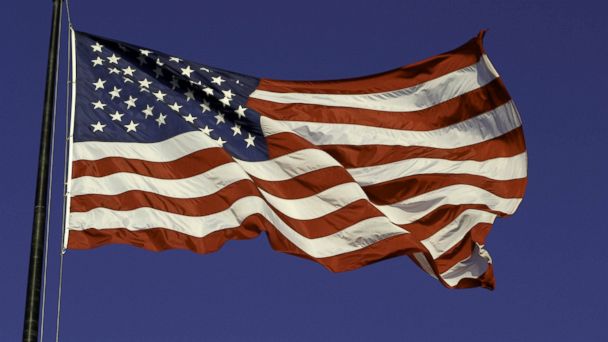Star Spangled Banner Myths Debunked
Have you ever heard that the national anthem was originally written as a drinking song? Or that its writer came up with the lyrics as he was held prisoner aboard a British ship?
This year marks the 200 th anniversary of "The Star-Spangled Banner," written by Francis Scott Key in 1814.
6 People Who Should Have Lip-Synced the National Anthem
No Way Can You Sing! 'Star-Spangled Banner' turns 198
To celebrate the occasion, the Library of Congress held a symposium examining the origins of the ballad, featuring one expert who attempted to debunk many misconceptions about the patriotic tune.
MYTH ONE: "Francis Scott Key was held prisoner aboard a British ship during the Battle of Baltimore."
Key was actually aboard an American ship during the Battle of Baltimore. He was on a diplomatic mission to negotiate with the British before the battle.
"When the battle starts they move him back to his American ship, which is fully crewed for a diplomatic mission," Mark Clague, associate professor of Music, American Culture, and African American Studies at the University of Michigan, recounted. "The idea we have that he was sort of locked in his cell, lonely, reaching into his pocket for a scrap of paper - you don't show up in a diplomatic mission without lots of paper to write the next treaty."
MYTH TWO: "Francis Scott Key wrote a poem later set to music by someone else."
Clague argued that this commonly held belief is also a myth. "The Star-Spangled Banner" was actually written by Key to the melody of "When the Warrior Returns," Clague said, adding that Key's initial intent was for a fast-tempo anthem, as evident by Keys' original notes, which called for "con spirito," which means with spirit.
"The Star-Spangled Banner" shares a very unique rhyme scheme with "The Anacreontic Song," a popular melody at the time, Clague noted, asserting that this must have been intentional.
MYTH THREE: "The national anthem is based on a bawdy old drinking song."
"The Anacreontic Song" was actually sung at the start of the Anacreontic Society's meetings - a gentlemen's club at the time. Though it was first performed at the Crown and Anchor Tavern in London, Clague claims that "It was a very fashionable restaurant. It had a ballroom that held 200 people which you could hold a two-hour symphony concert in - which was how you started a meeting of the Anacreontic Society."
Modeling "The Star-Spangled Banner" after "The Anacreontic Song" would have been "hip and current," at the time, according to Clague.
Following the symposium, the Library of Congress celebrated the national anthem with a concert where internationally renowned baritone Thomas Hampton preformed a set of American patriotic music, including "Yankee Doodle," "America the Beautiful," and of course, "The Star-Spangled Banner."
Hampton's vocals were accompanied by piano, the University of Michigan Alumni Chorus, as well as encouraged audience participation.
And the star-spangled fun is not over yet. On July 4, conductor John Williams is debuting a new arrangement of "The Star-Spangled Banner," featuring choirs, trumpets, an orchestra and cannons on the National Mall, the Associated Press reports.

(Getty Images)